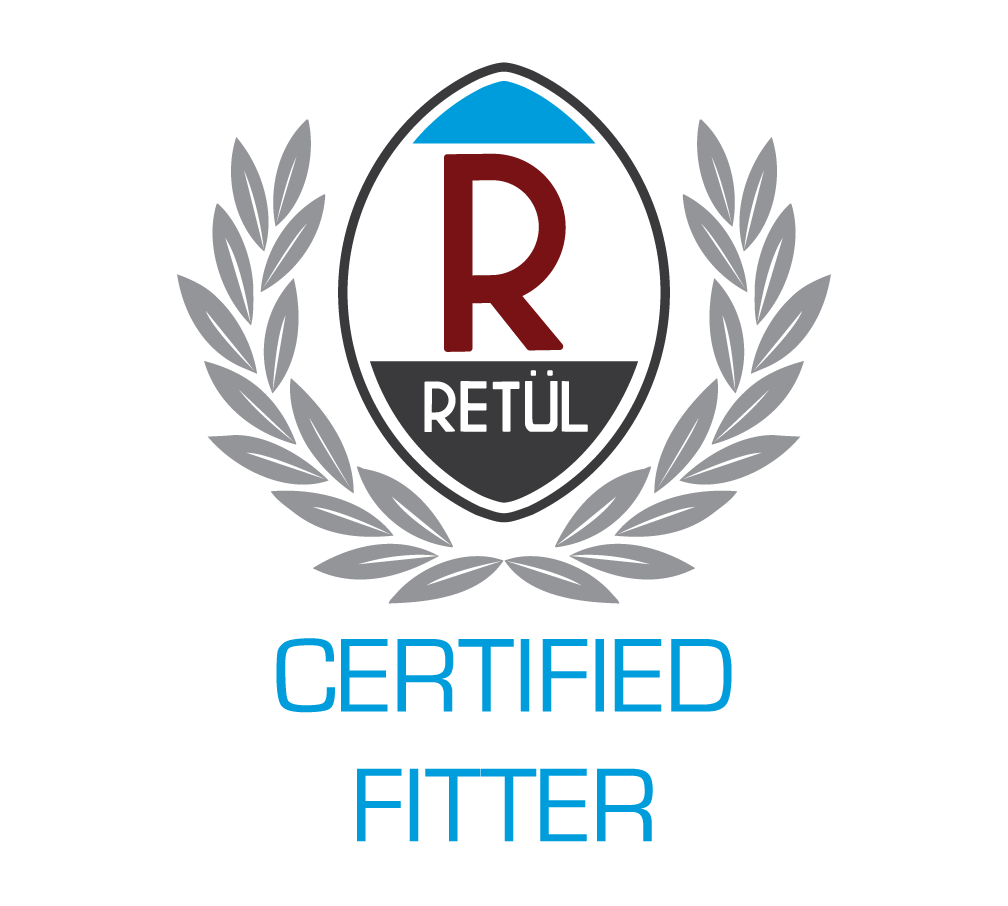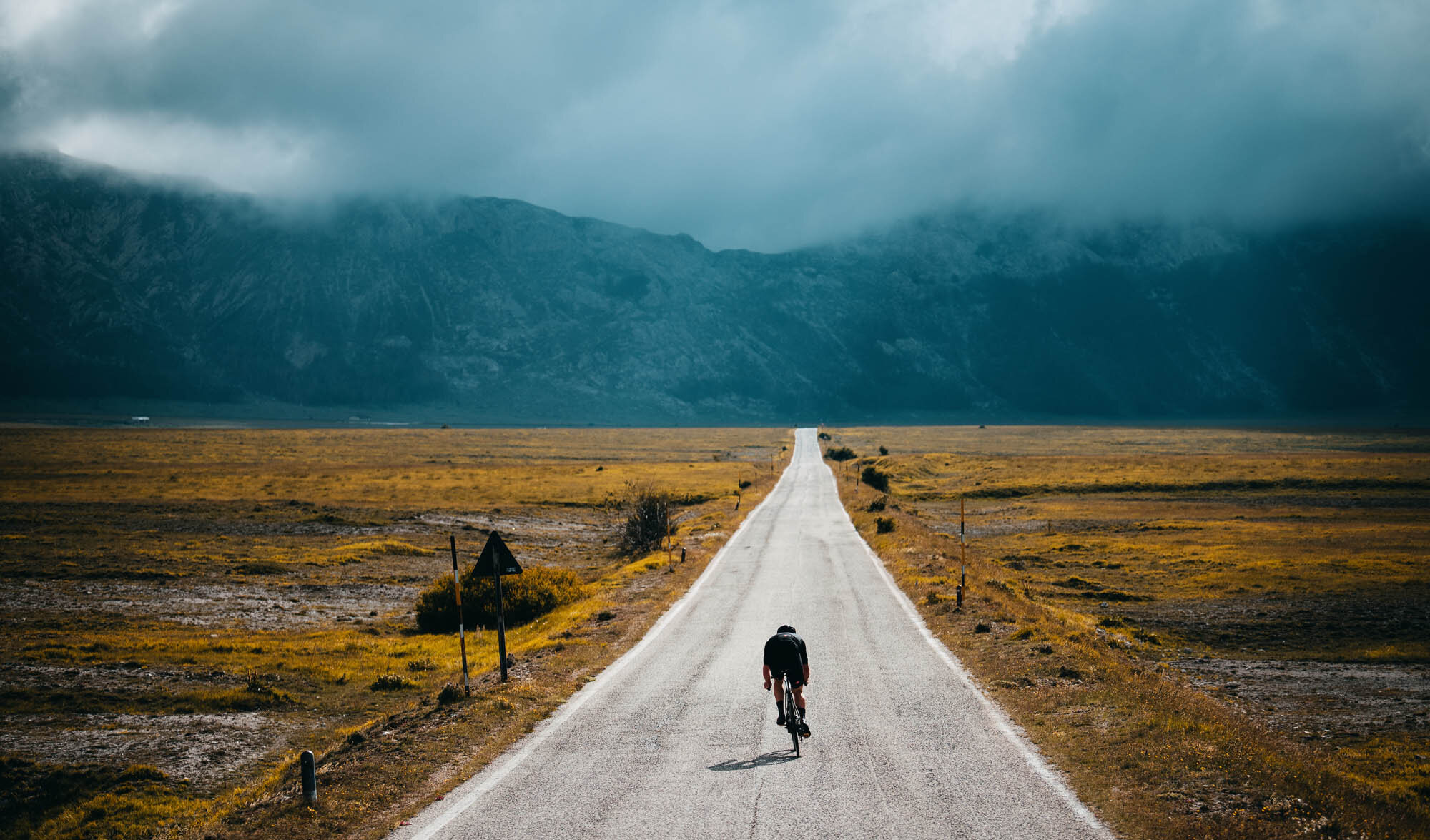Everyone has a different body shape, different biomechanics, different levels of flexibility and different levels of physical ability, so you should ensure the bike fits you. An accurate bike fit is the most important factor for optimal efficiency, performance and comfort on the bike.
A bike fit can increase your speed for the same effort, as well as help with avoiding discomfort and/or injury
Let’s face it, when it comes to taking your bike out for a spin, you want to make sure that you're riding in the most efficient way possible in order to get the most out of your session. With life always being so busy, when it comes to your riding position you tend to find what suits you best and stick with it without giving it a second thought. But as our bodies change over time, so will our biomechanics and therefore our riding position, meaning you may not be riding in the most optimal position. This is where getting a professional bike fit comes into play.
In this blog post we will tell you everything you need to know about getting a bike fit, including what’s involved, the costs, benefits and the signs that you need a bike fit.
What is a Bike Fit?
So, starting with the most obvious question, what is a bike fit?
An accurate bike fit is the most important factor for optimal efficiency, performance and comfort on the bike. As everyone has a different body shape, different biomechanics, different levels of flexibility and physical ability, everyone’s bike will be set up differently and you need to make sure that your bike fits you.
By having your bike fitted correctly, it will prevent pain that is common in the knee, hip and lower back, particularly for riders who are trying to adapt their bodies to a bike they have already purchased or bought second hand.
The most efficient way to identify the right position for you is in a dynamic format. Other companies may use different methods to do this, but at LIOS we utilise Retül Technology, which is a 3D motion-capture bike fitting system designed to provide highly accurate and comprehensive bike fit data (see below for more details).
At LIOS we care about ensuring the bike is built or adjusted around your biomechanics, but also with an eye on your goals and aspirations.
What is a Retül 3D Motion Analysis Bike Fit?
Retül technology incorporates three main data points in bike fit theory:
1. Dynamic Bike fits are More Accurate
Using motion-capture technology, the system records your positions in action, therefore creating the most realistic picture of your actual pedal strokes and body position when out on the road and trails.
2. Measurements Must be Accurate
Measurements made by traditional tools are subject to human error and therefore can be inaccurate. The Retül bike fitting system creates true objective data.
3. Biomechanics are Best Assessed in Three-dimensional Space
Fit data collected in a traditional two-dimensional plane (i.e. video-based systems) is fairly limited because the fitter can only look at one view at a time and those views stand as independent reference points. In order to make the best recommendations, the fitter must appreciate that the front and side views are actually interdependent reference points, so they must be viewed simultaneously in three dimensions in order to distinguish how all the applicable movements of the body are working together. Retül bike fit technology uses 3D motion sensors to simultaneously gather data on multiple angles.
What are the benefits of having a bike fit?
Anyone who plans to ride for any period of time should consider having their position assessed to ensure optimal efficiency, comfort and injury prevention. This applies to cyclists/triathletes who already have a bike, but more so to those looking at purchasing a new bike.
Everyone is an individual and the bike should fit you; not the other way around. A bike fit will help you to become more efficient on your bike by increasing your power transfer on the pedals and by improving your pedalling stroke so you can save more energy and even improve your times.
It will also help to improve your comfort which is crucial for riding efficiently, longer and even faster. Many people steer clear from cycling, as they see it as a painful pastime, however cycling is one of the best sports for avoiding traumas if your position matches your flexibility and your other functional considerations.
It can also help to increase your confidence whilst riding, as your handling and pedalling efficiency increases, it will give you more trust in your capacities to pedal, turn, brake, accelerate and jump away from the pack.
Having your bike fitted correctly has so many advantages, not only for performance, but it will leave you feeling ready to face any challenge with a big smile on your face.
Signs that you need a bike fit!
Riding a bike should be comfortable, so any pain, numbness or tingling, especially in your hands, feet or your ‘backside’ are signs that something about your bike doesn’t fit you properly. Knee pain, along with upper back and neck pain, are also signs that something about your bike isn’t quite right for you. The fix could be really simple like adjusting the height of your saddle or it could be something more complicated, so it’s best to turn to a professional for help to avoid any injuries.
Another sign that your bike may need some adjusting is if you find yourself fidgeting after being in the saddle for a while. A proper riding position is one that can be maintained, so if you’re constantly fidgeting in the saddle, or you can’t find a comfortable hand position, or if what feels OK in the first hour of a ride doesn’t feel good in the third, then it’s definitely time to get a bike fit.
What’s involved in a bike fit at LIOS?
The whole bike fit process takes approximately two to three hours and, when you arrive for your consultation, we will initially conduct an informal review of your cycling history and aspirations. We will then perform a pre-fit assessment, which involves an analysis of your natural flexibility, core strength and biomechanics. It is nothing strenuous, but basically a look at foot arches and foot rotation, leg length discrepancy, pelvic and shoulder alignment etc, followed by a few exercises (hamstring raises, standing calf raises etc) and stretches.
After we've checked your shoe, cleat and pedal interface, we will then set up your bike on a turbo trainer. Once that is complete you will then start a gentle warm-up on your bike.
Once you’re warmed up, we will position Retül LED markers on eight of your key anatomical joints, then record a video clip of your current position.
Measurements are taken by the Retül system whilst you're pedalling. Once we have recorded the first set of data with the Retül system, you will jump off the bike and we will make manual adjustments to the bike (seat post height, saddle position, stem length, stem angle etc). This process continues until we have found the 'sweet spot' between comfort, efficiency and power.
Once we have completed the fit, we will record another video clip to show your ‘before’ and ‘after’ positions. Then your bike is scanned into the system, so you have a detailed geometry breakdown.
Once everything is completed and you are happy with your fitting, we will email you a full report highlighting the key data for you to have as a record.
What elements may be changed during my bike fit?
Depending on what issues you have, these are the adjustments that can be made to your bike during a fit:
● Handlebar width
● Saddle height
● Saddle fore/aft position (movement of seat on the saddle rails)
● Saddle tilt (angle of saddle in relation to the floor
● Fitting a new saddle
● Stem length
● Stem angle
● Stem spacer stack height
● Brake lever adjustments
● Shoe, insole and cleat adjustments
What should I wear to my bike fit?
When you head to LIOS for your bike fit, you should ideally wear your full cycling outfit, as getting a bike fit in baggy or loose fitting clothes will make the bike fit data less accurate.
It’s also important to bring the shoes that you normally ride in, so that the fit technician can review your cleat placement, as well as check your shoe size/fitment.
Once I have a bike fit will I ever need one again?
As time goes by, your goals, riding style and body changes. This means that a bike fit you had a few years ago may not actually suit you now. Your bike fit will change due to injuries, changes in skill level, new goals, weight loss/gain and an increase/decrease in flexibility.
If anything changes with your body, or if your measurements have been gathering figurative dust for a few years, then it is a good idea to go get an updated bike fit, so you can stay at the peak of your performance and continue preventing discomfort and/or injury.
How much does a bike fit cost at LIOS?
The cost of a full bike fit consultation is £200.00 and will take approximately two to three hours. If you would like to be fitted on two of your bikes (i.e. a road bike and a tri bike), the cost of the consultation is £300.00 and will take approximately three to four hours. You will receive another ‘check fit’ 4-6 weeks later as part of this package.
We appreciate that £200 is a lot of money, so we do offer other bike fitting services:
Basic Bike Fit - £120.00
Our basic bike fit is a service aimed at cyclists who feel that £200 is too much to spend on a bike fit, but recognise the importance of avoiding injury and being comfortable on their bike.
The two-hour consultation will put you into a suitable position for who you are as an individual considering the limitations of your body, age, experience and the distances and type of riding you’re doing and includes:
● Flexibility assessment.
● Shoe assessment.
● Cleat adjustment.
● Pre-fit position image.
● Adjustments to the bike (where necessary).
● Posture correction on the bike.
● Post-fit image.
● Written report.
● Bike CAD drawing of the post-fit set up.
Cleat Fitting - £25.00
A service for customers not confident in the correct placement of their cleats. The pedals and cleats are the main interface for power transfer, so if you get cleat placement wrong,then this can cause injury, let alone have an impact on performance. This session takes approximately 30-60 minutes and includes:
● Shoe assessment (including insole recommendations).
● Foot assessment.
● Optimum cleat placement and fitting.
● Up to two pairs of shoes included.
What will happen after I get my bike fit?
After your professional bike fit, you will need to give your body some time to adjust to the position changes. Especially if your fit on the bike has changed a lot, back off the volume and intensity of riding for a couple of weeks to give your body time to adjust or until you feel comfortable with your new riding position.
If you experience a continuous problem after your new fit, then it’s best to get back in touch with us and we will see how we can solve the issue.
Feel free to drop us an email or telephone call if you’re interested in learning more about bike fits or you’d like to book one.










